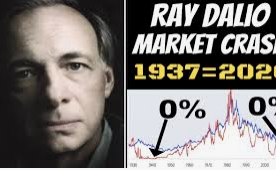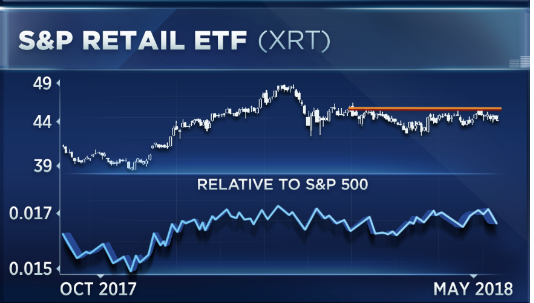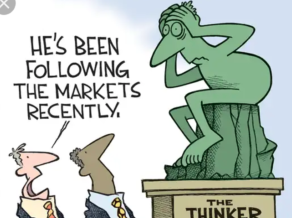Despite the recent level setting of market expectations and more recent equilibrium found in the major indices, I wouldn’t sound the “all clear” bells just yet. After bouncing off of key levels during the greater than 10% market correction, all 3 major averages finished higher last week. Recent market whipsawing has caused highly elevated levels of volatility and drawn form within great consternation amongst the investment communities. Trading has been driven by concerns that inflation could be returning to the market, and that the Federal Reserve may have to become more aggressive to combat such a scenario. In its semiannual monetary policy report to Congress, the Fed signaled that it saw broad improvement in the U.S. economy, and while it pointed to a pickup in inflation toward the end of last year, it didn’t suggest that a rise in prices warranted more aggressive policy action. Although the Fed may have quelled fears surrounding rising rates, suggesting that wage inflation was not overly concerning or a net negative regarding inflation, the major averages like the Fed Chair Jerome Powell may continue to be tested.
Powell delivers his semi-annual economic testimony before House and Senate committees Tuesday and Thursday, in his first major appearances as chairman. As it may have very well been the wage inflation data that accompanied the January Nonfarm Payroll report service as the market sell-off catalyst, Powell will also be testifying during the very week that the all-important Personal Consumption and Expenditures data is released. The PCE data includes the important inflation index that the Fed monitors mostly and values more so than that of wage data month to month. And this also comes on the heels of a hotter than expected CPI number last week that jolted the 10-yr Treasury yield above 2.95% and to its highest levels since 2014. The greatest angst for investors since early February has been the threat of inflation/reflation and rising rates coinciding with a relatively richly valued equity market.
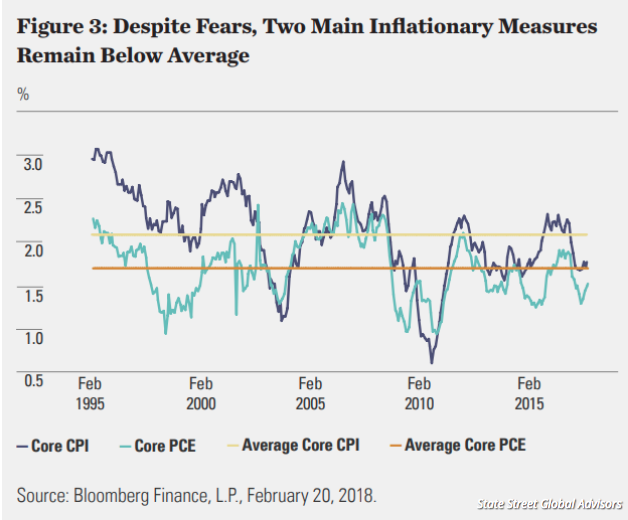
In many ways, since the start of February, investors have reset the clock and price to earnings multiple on the S&P 500 during February 2018, even if ever so slightly. Even with the S&P 500 recapturing some 5+% of what it had lost during the month of February, I’m not terribly convinced equities are “out of rough waters” just yet. Confirmation needs to be found for the latest rally in the S&P 500 and with moves of .50-1% daily, this is hardly a sign of a stable equity market. In a previous look at the S&P 500 technicals, Edward Cordoba analyzed the chart of the S&P 500 and recognized that there would likely be further downside, after the 10% correction had been realized. The very next trading session the S&P 500 did indeed fall another 2% before bouncing off of the 2,537 level. The following chart indicates Cordoba’s former analysis.
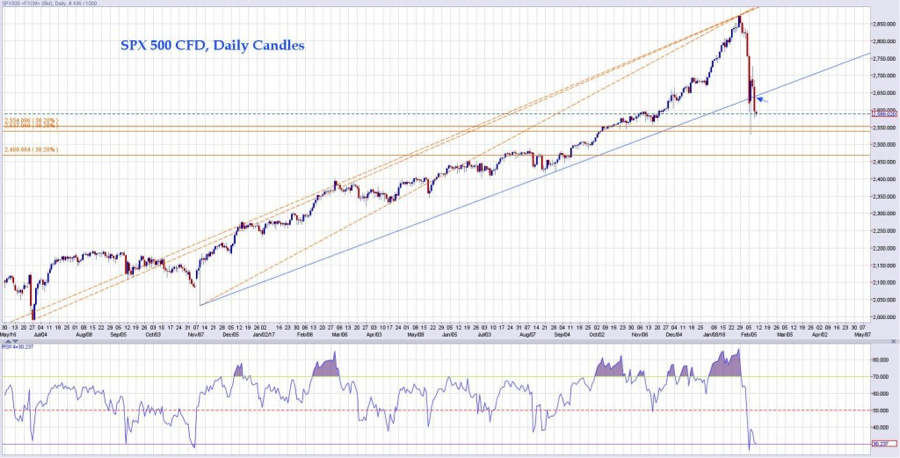
But now, Cordoba suggests that the recent rally off the bottom may persist in his most recent technical analysis. While technical analysis is not an exact science, it does appear that the market is on solid footing presently.
This week is a big week for retail earnings and Macy’s will be the first major retailer to deliver results. The retailer will be followed by the likes of TJX Companies, J.C. Penney, Foot Locker and more this week.
I have been bearish on Macy’s, warning through a series of articles and reports, over the last 2 years. In light of the recent share price bottoming in the $17 range and rising to more than $27 since missing Q3 2017 revenue expectations, but beating EPS estimates, I’m not inclined to suggest Macy’s is in the clear for investor capital consideration. The company has been benefiting on the bottom line through severe cost cutting initiatives that surround streamlining operations, selling real estate assets and closing unprofitable stores. On a YOY basis, Q3 2017 sales fell more than 6%, even with the company having shed several dozen stores through the first half of 2017. Expectations for Q4 results are likely subdued and under little scrutiny as the company pre-released positive holiday sales results and has already suggested that Q4 2017 gross margins will be under pressure due to holiday shipping and the highly promotional environment that is the Q4 period.
On the 3Q17 conference call, Macy’s chief financial officer Karen M. Hoguet stated that the company expects its gross margin to decline by 30 to 80 bps on a YOY basis in 4Q17. However, the company did not provide any update on its 4Q17 gross margin guidance following its better-than-expected 2017 holiday sales. If this proves to come in even worse than previous guidance, it may prove to be the fly in the ointment for M shares. But we’ll wait and see. In terms of what analysts are calling for in Q4 2017 results let’s take a look below:
- $2.68 in earnings per share
- $8.65bn in revenues
- 2018 revenues expected to decline 3.7%
- 2018 EPS expected to grow from $3.11 to $3.62
Macy’s has offered very little in the way of fixing all that ails its foot traffic and sales over the last 2+ years and as sales have fallen precipitously. While profits may appear better near-term, unless the revenue picture is improved, earnings will revert to the former declines. To date, the majority of initiatives aimed at improving sales come from jewelry, cosmetics, Back Stage, private label focus and new product implementation. Much of this has proven difficult to scale rapidly and without hitting net income. While comparisons are relatively easy in the first half of 2017 for Macy’s, the back half of the year may prove difficult if the retailer cannot drive foot traffic and sales. As it pertains to the possibility of being acquired, this remains in doubt given the company’s outsized debt when juxtaposed to sales trends. Having said that, along with the probability of future real estate asset sales, it still remains a risk for short participants.
Speaking of earnings, the numbers continue to rise as estimated and reported by Thomson Reuters. In our latest reporting on Q4 2017 earnings expectations, Reuters had increased their estimates for Q4 2017 to 14.7 percent. The trend continues as the data and analytics firm ratcheted up expectations once again last week.
Aggregate Estimates and Revisions
- Fourth quarter earnings are expected to increase 7% from Q4 2016. Excluding the Energy sector, the earnings growth estimate declines to 12.7%.
- Of the 341 companies in the S&P 500 that have reported earnings to date for Q4 2017, 77.7% have reported earnings above analyst expectations. This is above the long-term average of 64% and above the average over the past four quarters of 72%.
- Fourth quarter revenue is expected to increase 8.0% from Q4 2016. Excluding the Energy sector, the revenue growth estimate declines to 6.9%.
- 2% of companies have reported Q4 2017 revenue above analyst expectations. This is above the long-term average of 60% and above the average over the past four quarters of 63%.
- First quarter earnings are expected to increase 17.6% from Q1 2017. Excluding the energy sector, the earnings growth estimate declines to 15.7%.
The earnings picture continues to support equity markets, even with bond yields on the rise. On the other hand, it should be noted that fund flows still favored bonds over equity ETF’s last week. After all that has been said and done through the month of February, we are heading into the final trading days of the month with some key technical levels ahead. Investors would be wise to keep a watchful eye on retail earnings this week and after Wal-Mart was found wanting for a more perfect report last week when it expressed contracting gross margins in the face of higher sales, but lesser than anticipated earnings for the Q4 2017 period. In addition to retail earnings, Fed Chair Powell’s testimony may find markets on the edge of their seats around the globe.
Tags: SPY DJIA IWM QQQ


